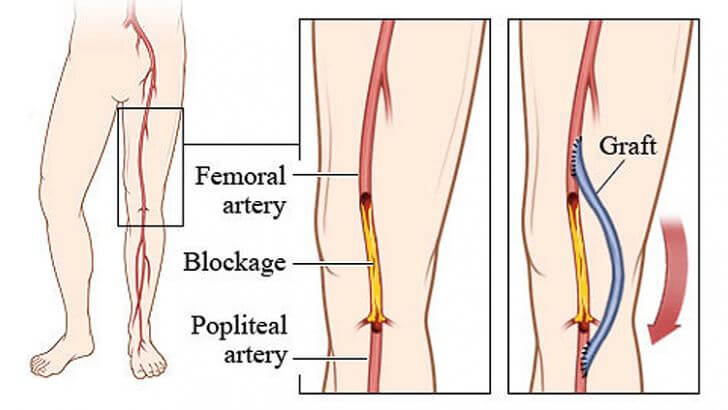Lower Limb Bypass Surgery

What is Lower Limb Bypass Surgery?
When do you need Lower Limb Bypass Surgery?
If you experience any of the symptoms of atherosclerosis, you may be a candidate for bypass surgery. Symptoms can range from pain in the arms or legs during activity, which usually goes away after rest, to the development of non-healing ulcers or gangrene (tissue death) in the most severe cases.
During a bypass procedure a new pathway for blood flow is formed using a graft. A graft can be a small part of one of your veins or a man-made synthetic tube that is connected above and below a blockage to allow blood to pass around it through the bypass. First, the vein that will serve as a bypass for your artery is selected and removed. Normally it is your greater saphenous vein (GSV), if it is suitable, which runs underneath your skin between your foot and your groin. Sometimes surgeons need to use another vein or a synthetic fabric artery for the graft if your GSV is unavailable or is not in a good condition. Normally for the procedure you will receive general or regional anaesthesia.
How long is the recovery of Lower Limb Bypass Surgery?
FAQs
SERVICES
Our Locations
Burwood Specialist Care,
323 Blackburn Road, Burwood East
Churchill Consulting Suites, Mulgrave Private Hospital
Wellness on Wellington,
1101 Wellington Road, Rowville
Western Private Hospital,
Suite 2, 44 Eleanor Street, Footscray
North Western Vascular,
59 Holmes Road, Moonee Ponds
The Elms Family Medical Centre,
160 Main Street, Bacchus Marsh

